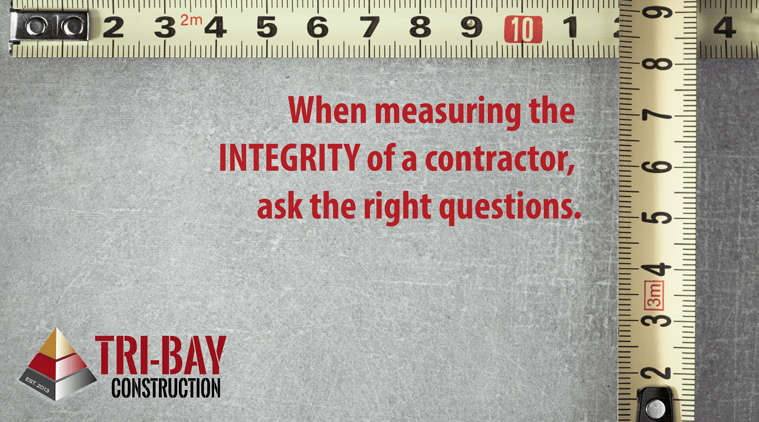How do you measure integrity in a business relationship?
If you answered “yes” to all of the above, you may have found the right contractor. With integrity as our core value, Tri-Bay Construction brings a team that can be trusted to deliver high-quality work consistently to every project regardless of your budget or complexity.
In today’s world, where information about any subject comes at us at blinding speeds, it is difficult to separate fact from opinion.
The phrase “I don’t know” is not often heard anymore. Everyone is an expert or knows an expert or says, “look it up on the internet.” We are willing to say, “I don’t know,” but have learned to say, “I will find out for you.” And then we only consult with reliable sources who share the same values and experience we do. Saying “yes” and then not following through seems to be more commonplace.
We have learned that “No” is a complete sentence. Often, patience and learning to wait for the right person for the job pays off in the long term. The lowest cost now, usually costs more later. With rising prices, labor shortages, labor cost increases, and the many delays we encounter today, price too often becomes the driving factor in choosing a contractor for your project.
Finding a contractor that will assist with realistic timelines, cost projections, and complete transparency is the road to a project with less stress and fewer problems. At Tri-Bay Construction, our experience and knowledge in all phases of the construction industry will ensure your project is launched on a solid foundation.
Without proper planning and pre-construction “homework,” a project will be built on sand, which will cost you more time and money.





